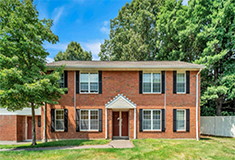News:
Connecticut
Posted: May 19, 2010
Time has come for landlords and contractors to comply with new lead-based paint rehab rules
As the calendar flips to May and warm weather approaches, renovation projects are in full swing or short-order. This summer, however, property managers, contractors, and would-be purchasers must be aware of important federal lead safe regulations. As of April 22, 2010, the Environmental Protection Agency's Renovation, Repair, and Painting (RRP) Program mandates that contractors performing renovation, repair and painting projects that disturb lead-based paint in homes, child care facilities, and schools built before 1978 must be certified and must follow specific work practices to prevent lead contamination.
This new rule, originally promulgated in April 2008, is geared towards protecting humans from lead which is known to be dangerous for adults, but particularly dangerous for children. The regulation is designed to ensure that owners and occupants of target housing and child-occupied facilities receive information on lead-based paint hazards prior to the commencement of renovations and to ensure that firms performing such work are certified and safe work practices are followed. Lead paint poisoning affects over one million children and if it is not detected early, children with high levels of lead can suffer from learning disabilities, violent behavior, and damage to the brain and nervous system.
As a threshold issue, the rule only applies to buildings considered target housing or child-occupied facilities. According to the EPA, target housing is a residential dwelling built prior to 1978, unless the housing is strictly for the elderly, in which case the rule does not apply. A child-occupied facility can exist in a residential or commercial setting and means that the same child, under six years of age, visits the same location for at least six hours a week and a total of 60 hours a year.
If a subject property meets one of the aforementioned definitions the party responsible for the renovation must file an application with the EPA to become a Lead Certified Firm. Each certified firm must also provide each job site at least one Certified Lead Renovator to act as the lead supervisor and to ensure that all other staff are trained in the use of lead-safe work practices. To become a Certified Lead Renovator an individual must undergo an eight hour training class with a refresher every five years.
At least 60 days prior to a renovation, the Certified Lead Renovator must provide building occupants with the lead pamphlet, "Renovate Right" before renovation work may begin. Firms performing renovations must also retain and, if requested, make available all records necessary to demonstrate compliance with the RRP rule for a period of three years following completion of the renovation.
The term "renovations" is broadly defined to include any "modification of any existing structure, or portion thereof that results in the disturbance of painted surfaces." The term applies to a broad range of trades including painting, carpentry, plumbing, HVAC, and electrical work that will disturb painted surfaces. To be cautious, unless a project involves simply painting over an existing surface, plan on complying with the RRP rule.
There are instances in which the RRP rule does not apply. If a renovation affects less than six s/f interior space or 20 s/f of exterior, the project has not reached the deminimus threshold. Similarly, the rule does not apply if no lead-based paint will be disturbed and this fact is determined by a certified lead inspector or proper use of EPA-recognized test kit by certified renovator. Finally, if the renovation is completed by a do-it-yourselfer occupant, then the rule does not apply.
Owners of rental properties performing renovation work themselves will need to be certified and ensure that the lead-safe work practices are followed. Where outside contractors are used, it will be prudent to ensure that the contracts require EPA certification. The application to become a lead safe firm and training providers can be found on the EPA's website. Failure to comply with these regulations can lead to fine of up to $32,500 per violation per day.
Notably, EPA has the authority to authorize states to administer their own RRP program that would operate in lieu of the EPA regulations. When a state becomes authorized, contractors and training providers working in these areas and consumers living there should follow these local rules which must be at least as strict as the federal progeram. The State of Connecticut is not yet authorized to administer the EPA's RRP.
Troy Bataille, Esq. is with Halloran & Sage, LLP, Hartford, Conn.
Tags:
Connecticut
MORE FROM Connecticut
CBRE brokers sale of Stamford Towers - 326,468 s/f Class A office
Stamford, CT The CBRE team of Jeff Dunne, Steve Bardsley, and Travis Langer, in collaboration with David Block, completed the sale of Stamford Towers, located at 680 & 750 Washington Blvd. CBRE represented the seller, CBRE Investment Management, and procured the buyer, a joint venture of Lamar Companies

Quick Hits










.png)